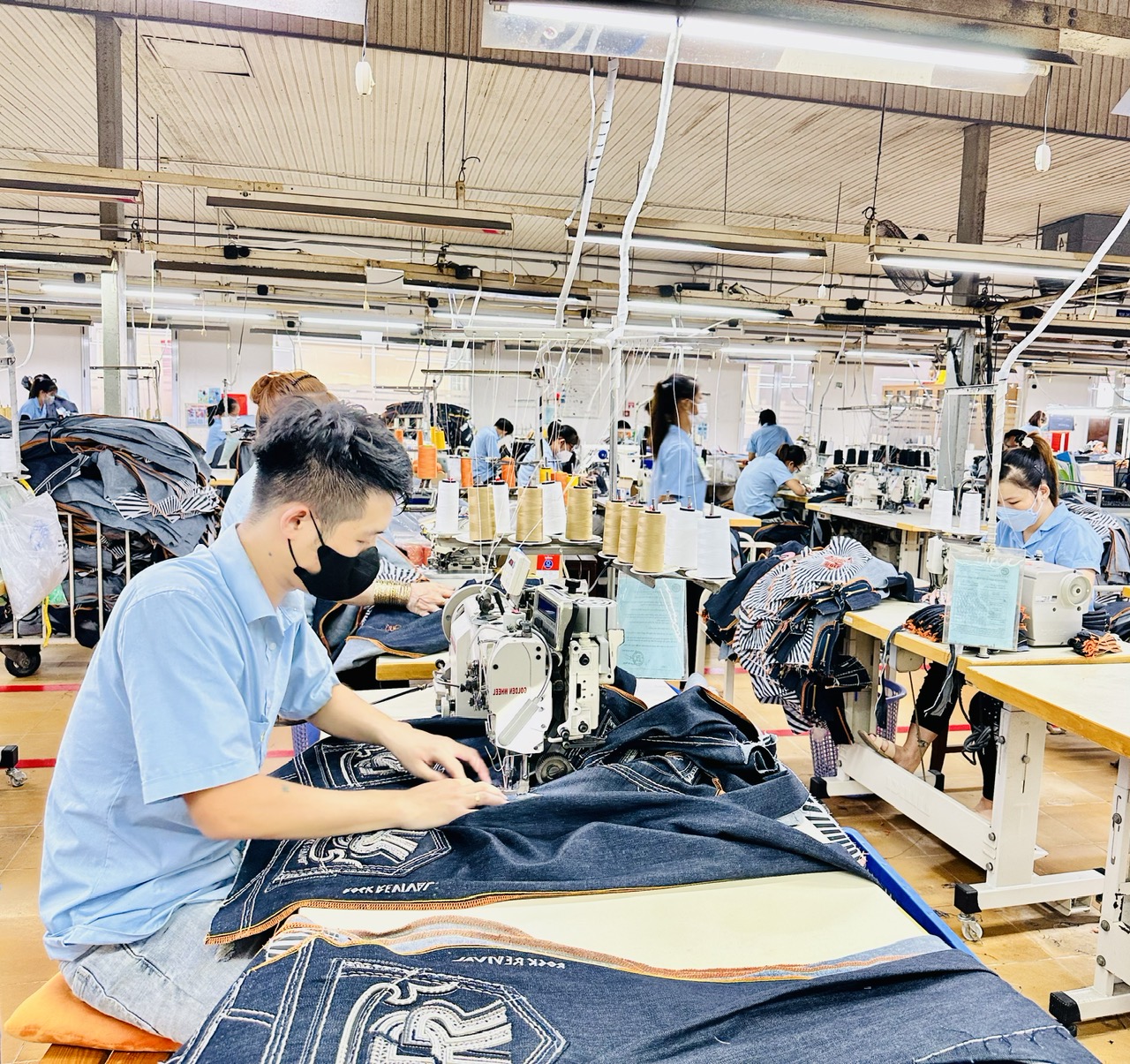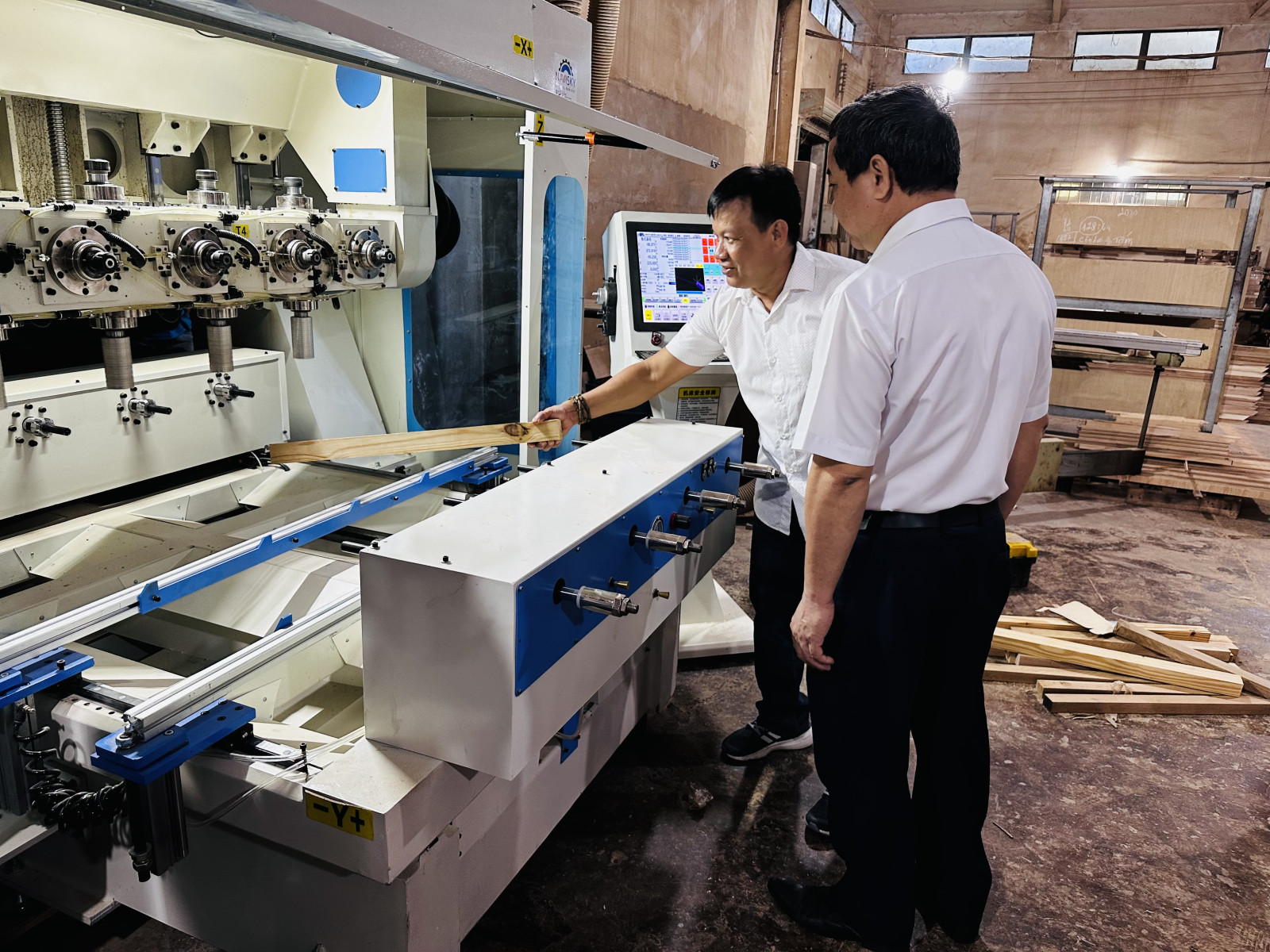Maintaining market stability with export turnover on sharp growth
In the first 4 months of 2024, Binh Duong's export turnover reached more than US$ 10.9 billion, an increase of 15.6% over the same period last year. The province’s functional sectors and businesses are making efforts to seize the growth opportunity while innovating production and management towards the goal of maintaining the market and sustainable development.
Nearly reaching US$11 billion
According to preliminary statistics on export activities of the Ministry of Industry and Trade, by the end of April, there were 4 provinces achieving US$ 10 billion or more in export turnover, namely Ho Chi Minh city, Bac Ninh, Thai Nguyen and Binh Duong. Compared to the same period last year, the number of provinces and cities with US$10 billion in export turnover increased by 2, including Thai Nguyen and Binh Duong. Notably, Binh Duong's export turnover in the first 4 months of the year reached more than US$ 10.9 billion, up 15.6% over the same period last year.

Production at Binh Duong Garment Joint Stock Company in Thuan An city
Of these, the domestic economic sector reached US$2.062 billion, an increase of 16.8% while the FDI sector gained about US$8,891 billion, an increase of 15.6% over the same period last year. Among the province's key export industries, wood products are recovering strongly, with export turnover in the first 4 months of the year estimated at US$1.954 billion, up 28.3% over the same period, accounting for 17.8% of the province’s total export revenue. The US is still the main market with turnover accounting for 82.6% of total.
According to Dien Quang Hiep, General Director of Minh Phat 2 Company in Thuan An city’s Binh Chuan ward, the export activities of the wood industry in the first 4 months of 2024 have many signs of positive growth and is forecasted to be very positive for the whole year of 2024. Currently, consumption of goods in many large markets such as the US and Europe is receiving gradually better signs. Recently, many wood enterprises have quickly researched market trends and converted from export processing to designing new, beautiful and good quality models, which are highly appreciated by many international buyers. This good sign shows that the wood processing and furniture industry is on the right track, not only increasing export turnover, but also gradually enhancing the position and brand of Binh Duong wood industry in the international market.
“Binh Duong province’s wood industry has a favorable position to take advantage of strong demand from domestic and international markets. Province-based enterprises are investing in new technology and digital transformation to develop new products and services, improving competitiveness, increasing efficiency and productivity. With many advantages in forestry development, business support policies and free trade agreements, Vietnam's export of timber and wood products has achieved much success in the international market", Mr. Hiep added.
However, according to Mr.Hiep, enterprises have also faced many difficulties when Vietnam's main export markets increasingly require strict control of timber origin to ensure legality, not causing deforestation, not affecting green production, reducing greenhouse gas emissions... As orders increase, the risk of trade fraud and fake origin of products and goods is increasing and trade competition is also complicated. This is a big challenge for wooden furniture exporters.
From a market perspective, Huynh Quang Thanh, General Director of Hiep Long Wood Company in Thuan An city said that US importers have highly appreciated and identified Vietnam as a market for supplying timber, wood products and important furniture products. The US is currently Vietnam's largest import market for timber and wood products. The potential in the US market is still large. This will be the foundation for exports to make a breakthrough in this market if enterprises know how to take advantage of the opportunity. However, wood enterprises also determined that focusing too much on one main market will bring high risks. That's why wood enterprises make great efforts to diversify and gradually increase the proportion of exports to other potential markets to minimize risks.
Converting at requirements
In the first 4 months of the year, exports of textile, garment, and footwear groups also had advantages to achieve the set growth goals. However, enterprises in the textile, garment and footwear industries have still faced many difficulties when being forced to meet the requirements of greening the supply chain.

Province-based enterprises pay special importance to innovating machinery and production technology at their export market. In picture: :Production line on wooden products at Danh Tung company in Thuan An city’s An Thanh ward
Phan Le Diem Trang, Vice-Chairwoman of provincial Textile and Apparel Association said: "We are looking forward to having support funds related to investment in technological change and green development. However, procedures need to be simpler so that enterprises can access them. It is necessary to avoid the situation of establishing many funds, but procedures are too cumbersome and too strict, making enterprises’access very difficult".
Nguyen Quang Vu, Chairman of provincial Leather, Footwear and Handbag Association said that enterprises’ biggest challenge is the bottleneck in the supply chain of raw materials. With 15 free trade agreements signed and Vietnam accessing and establishing trade relations with nearly 230 markets, policy changes in the import market will have a strong impact on businesses in the leather and footwear industry.
“Footwear is an industry causing large emissions in the production process and EU is a very large export market. Therefore, in the coming period, enterprises in the field must change to meet new EU regulations. For the leather and footwear industry reaching sustainable development, enterprises proposed the need to form up an industrial park specialized in making auxiliary products for the leather and footwear industry, focusing on the production of leather, technical fabrics, mold-making accessories..., thereby being convenient to protect the environment and organize concentrated production", Mr. Vu proposed.
Reported by Tieu My-Translated by Kim Tin
 To clear bottlenecks, make good use of FTAs
To clear bottlenecks, make good use of FTAs
 Vietnam balances supply and demand to prepare for Tet shopping season
Vietnam balances supply and demand to prepare for Tet shopping season
 Developing Bac Tan Uyen district into a town in the period 2030-2040
Developing Bac Tan Uyen district into a town in the period 2030-2040
 Accompanying investors for sustainable development
Accompanying investors for sustainable development
 Tan Uyen: Flexible adaptation, stable growth
Tan Uyen: Flexible adaptation, stable growth
 Tax revenue management boosted and modernized
Tax revenue management boosted and modernized
 To build synchronous infrastructure, facilitate new era development
To build synchronous infrastructure, facilitate new era development
 Bau Bang aims to become a center of innovation and industry
Bau Bang aims to become a center of innovation and industry
 Processing and manufacturing industry makes high efforts, gains good growth
Processing and manufacturing industry makes high efforts, gains good growth
 Enterprises assisted to enhance product quality and elevate competitiveness
Enterprises assisted to enhance product quality and elevate competitiveness





